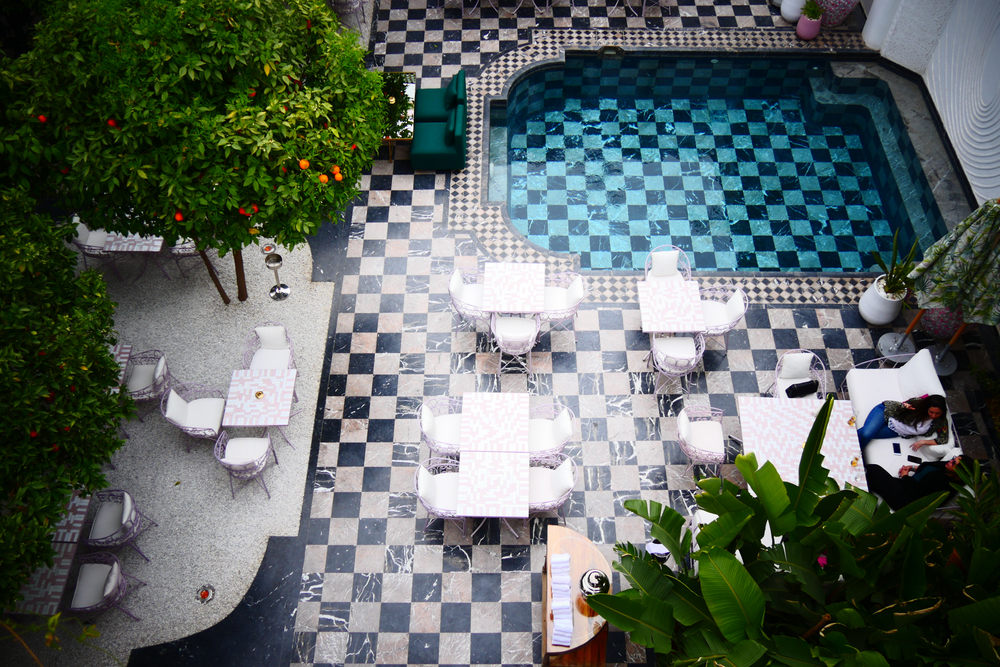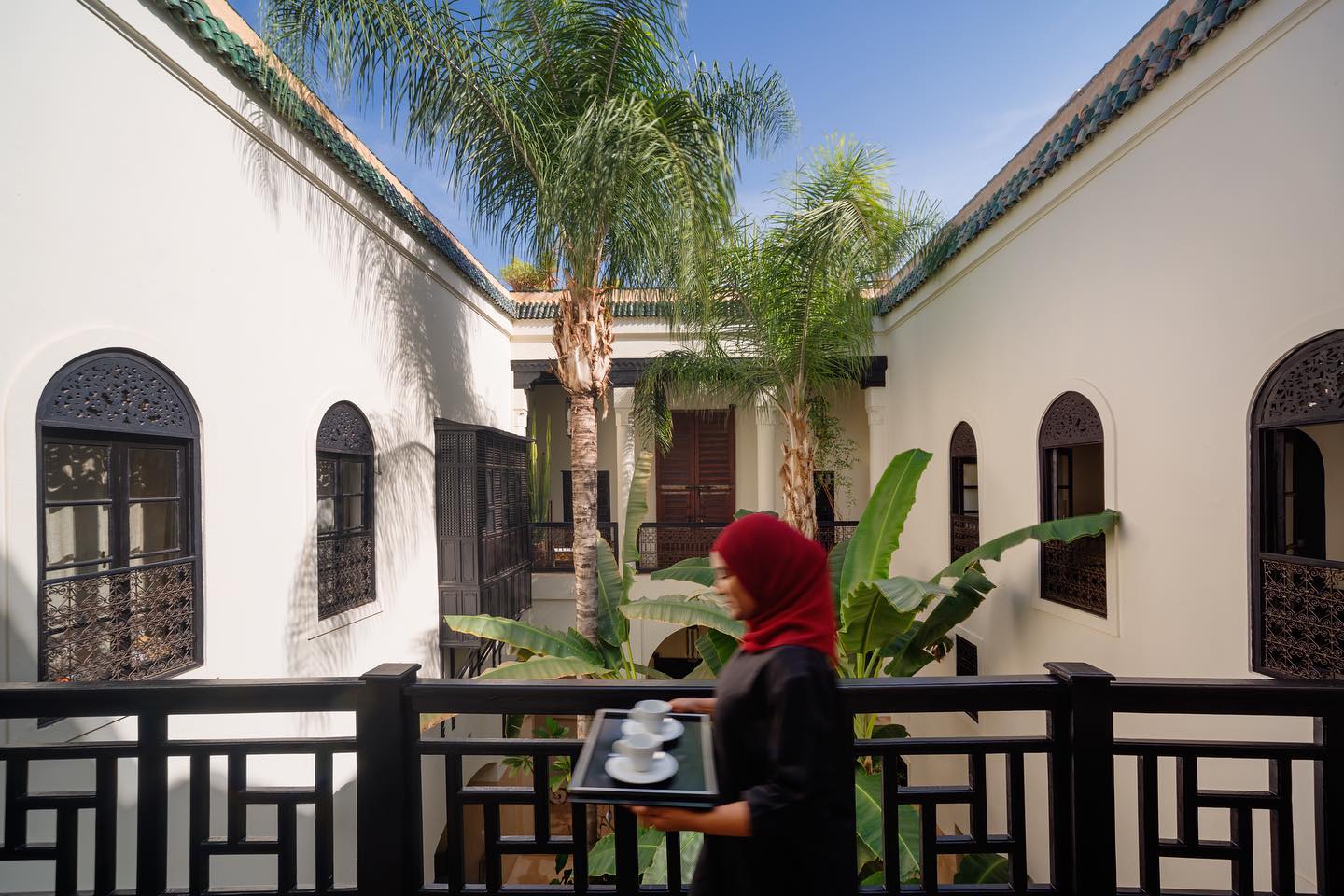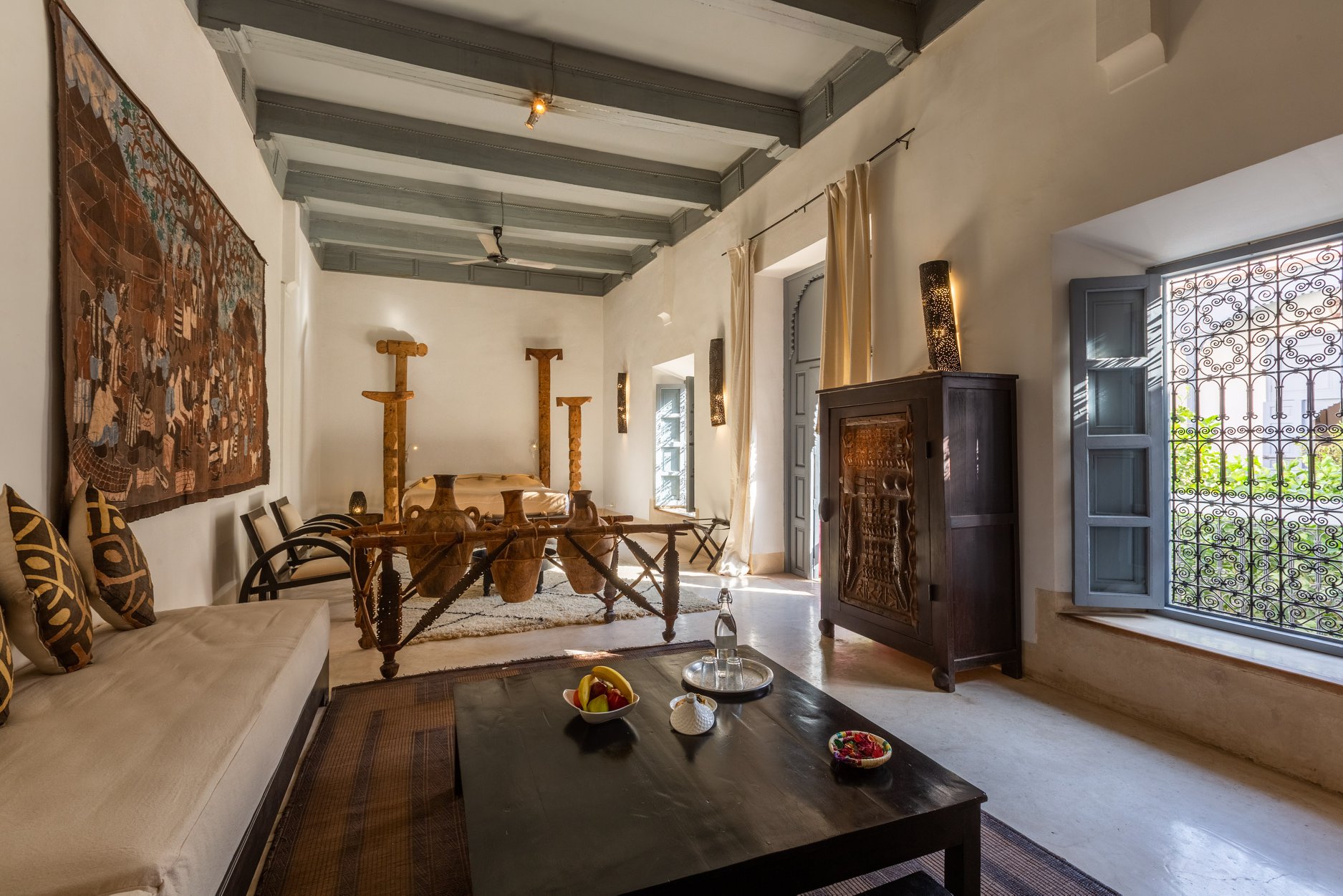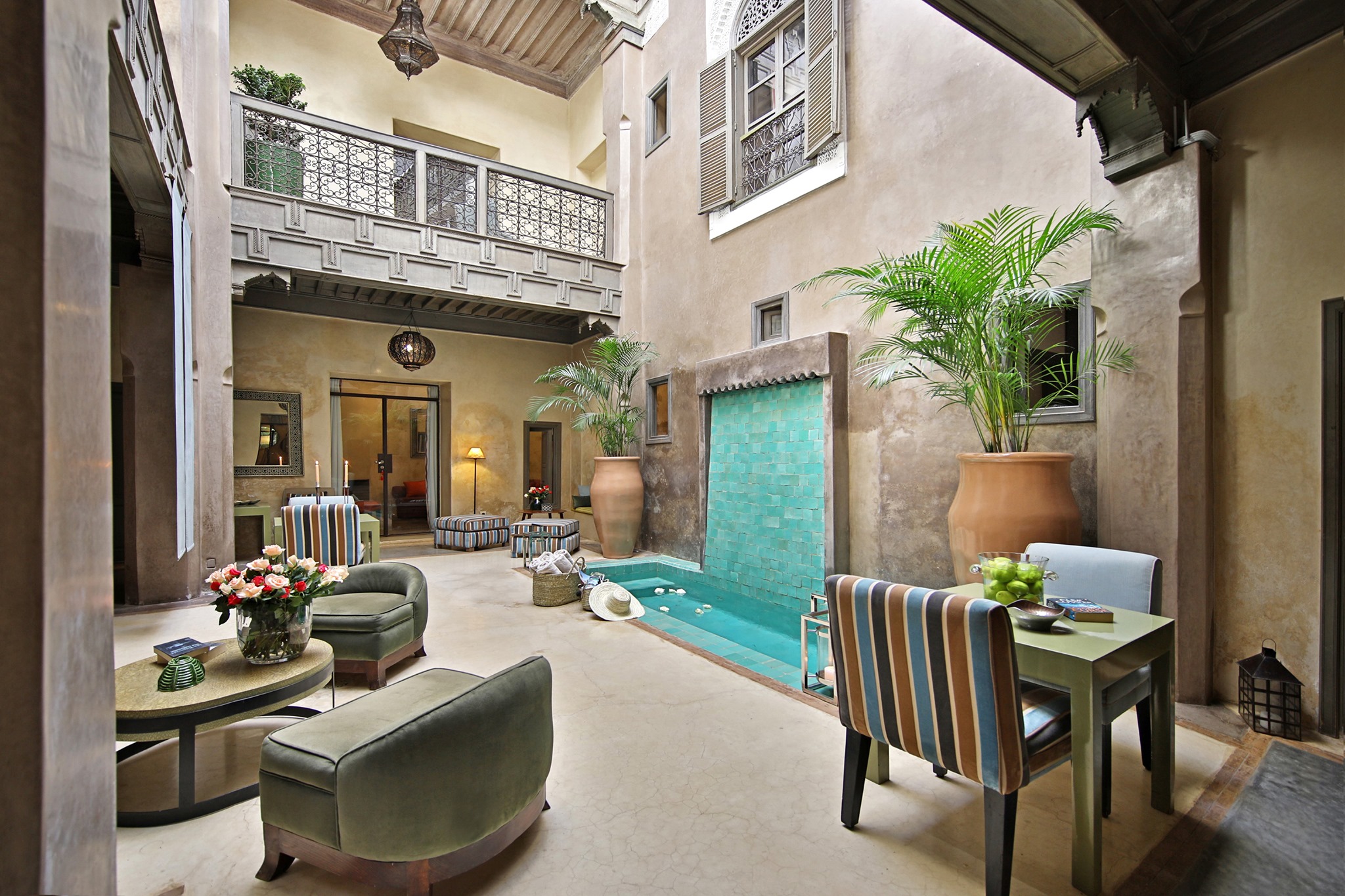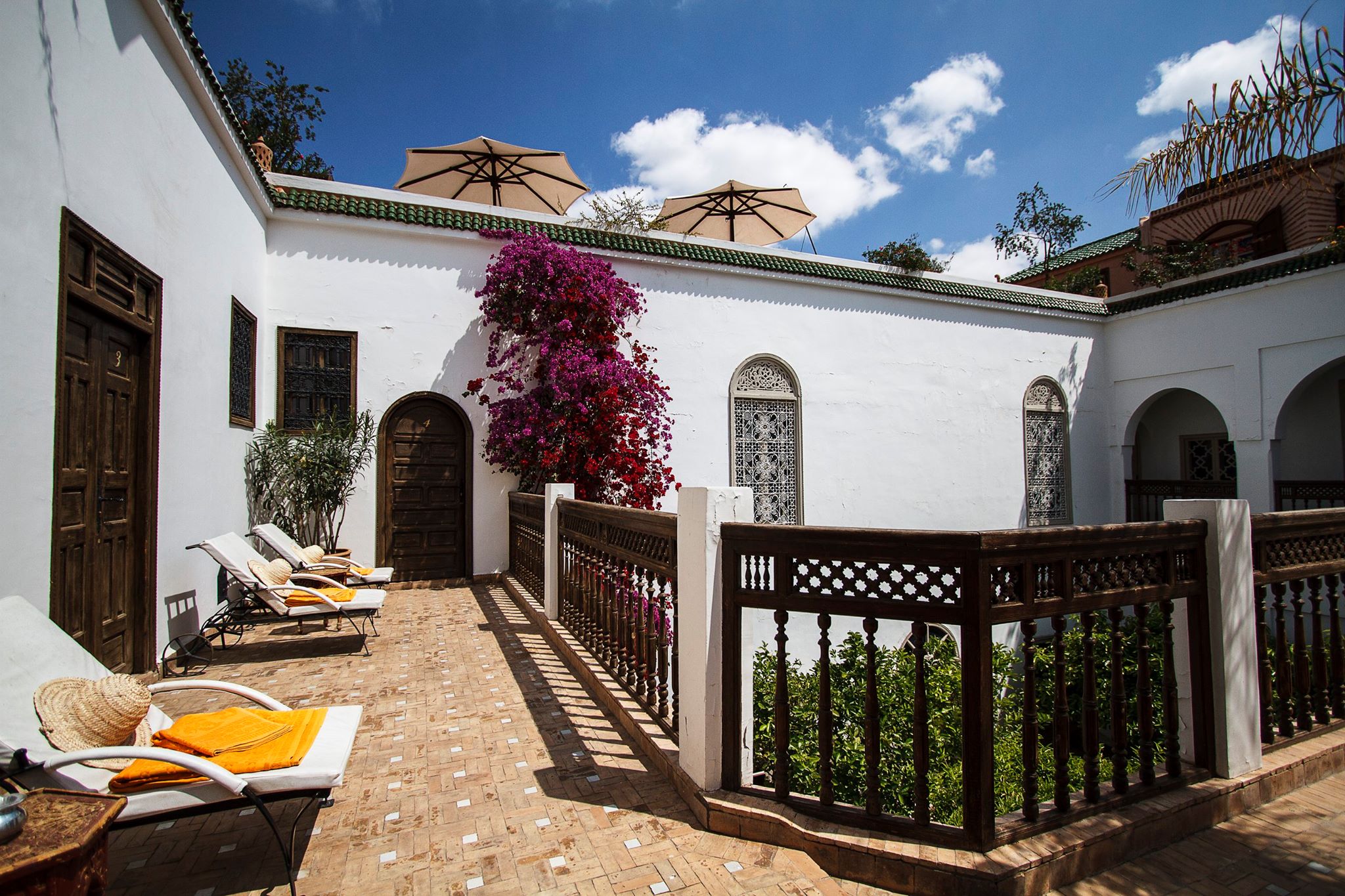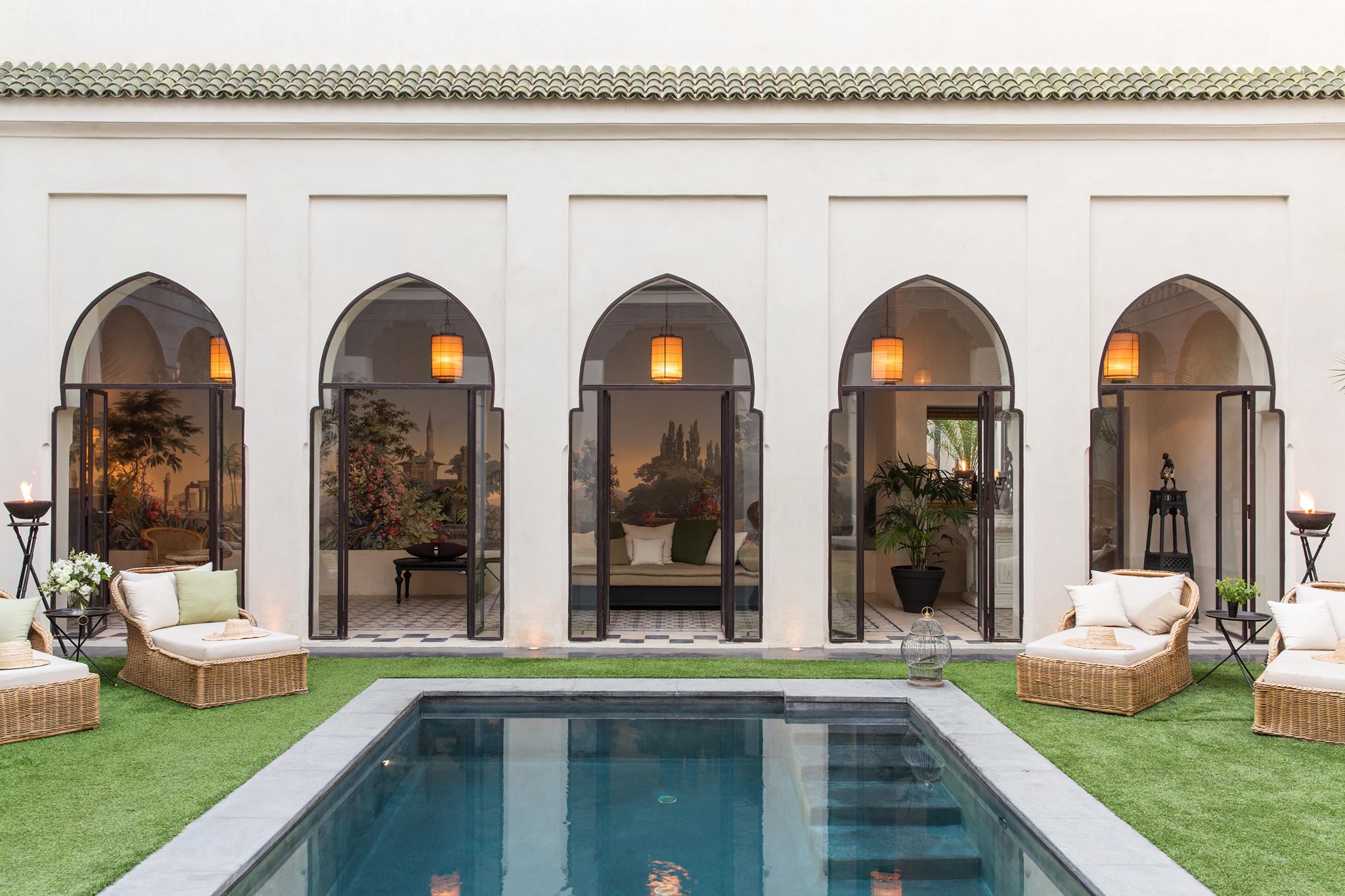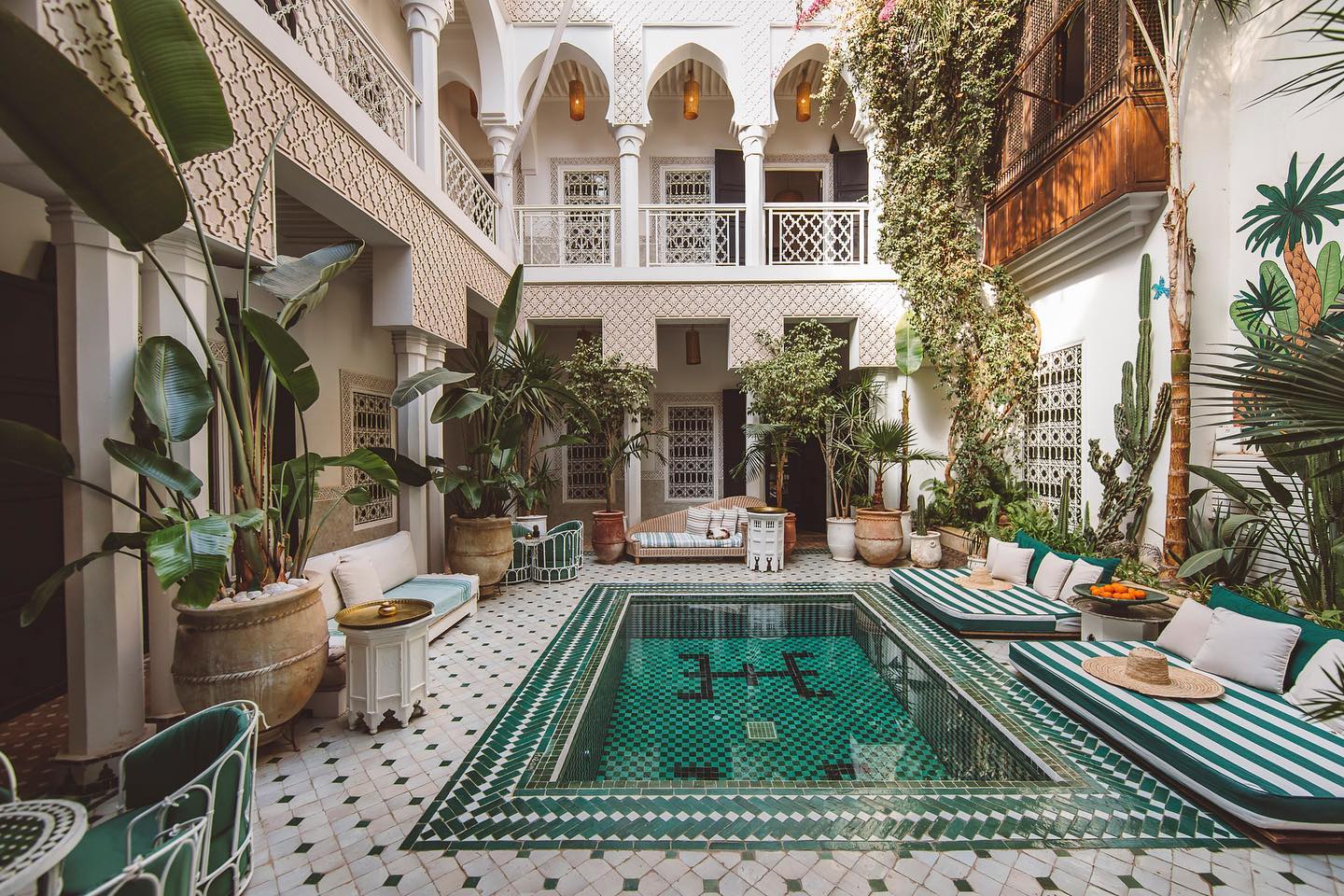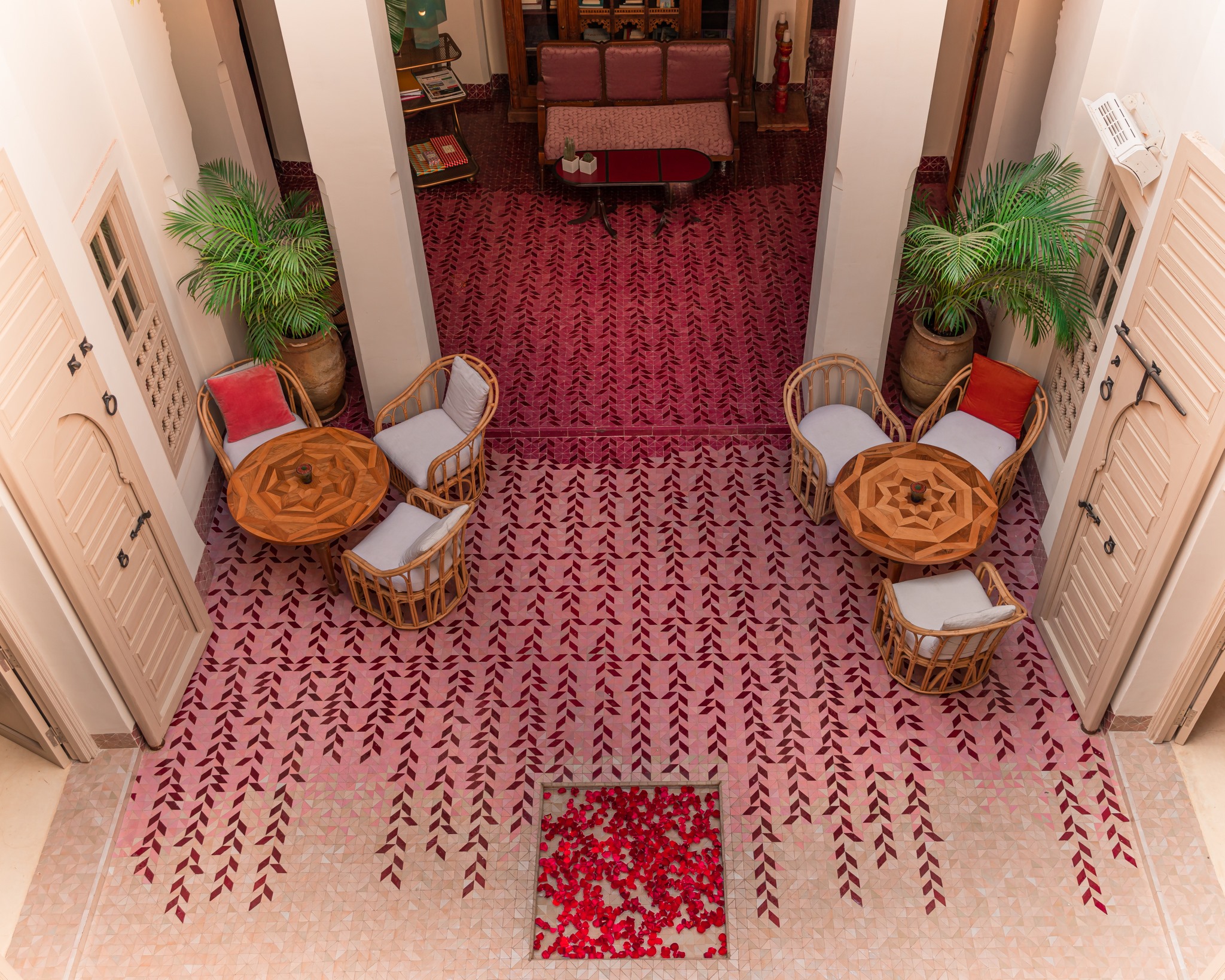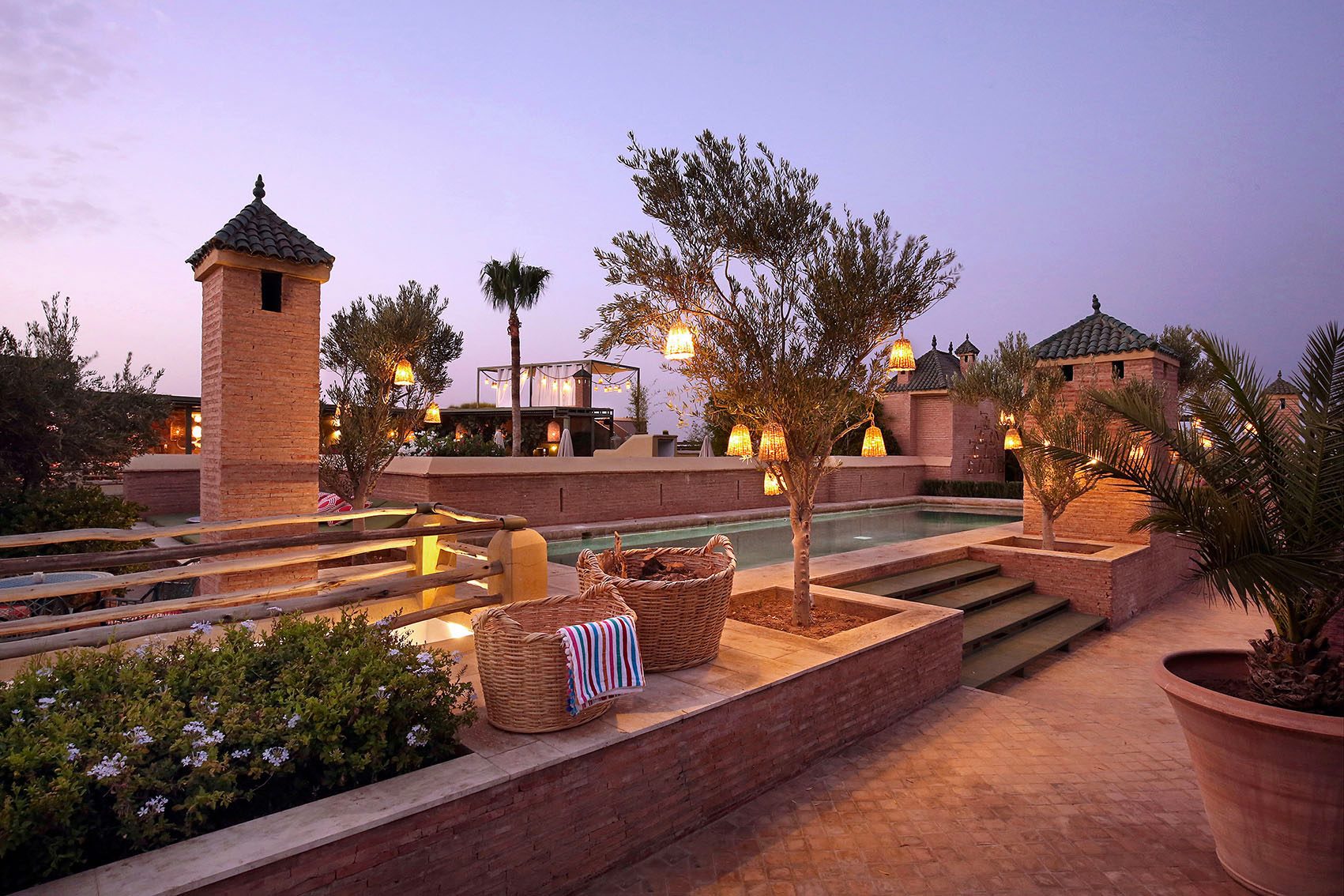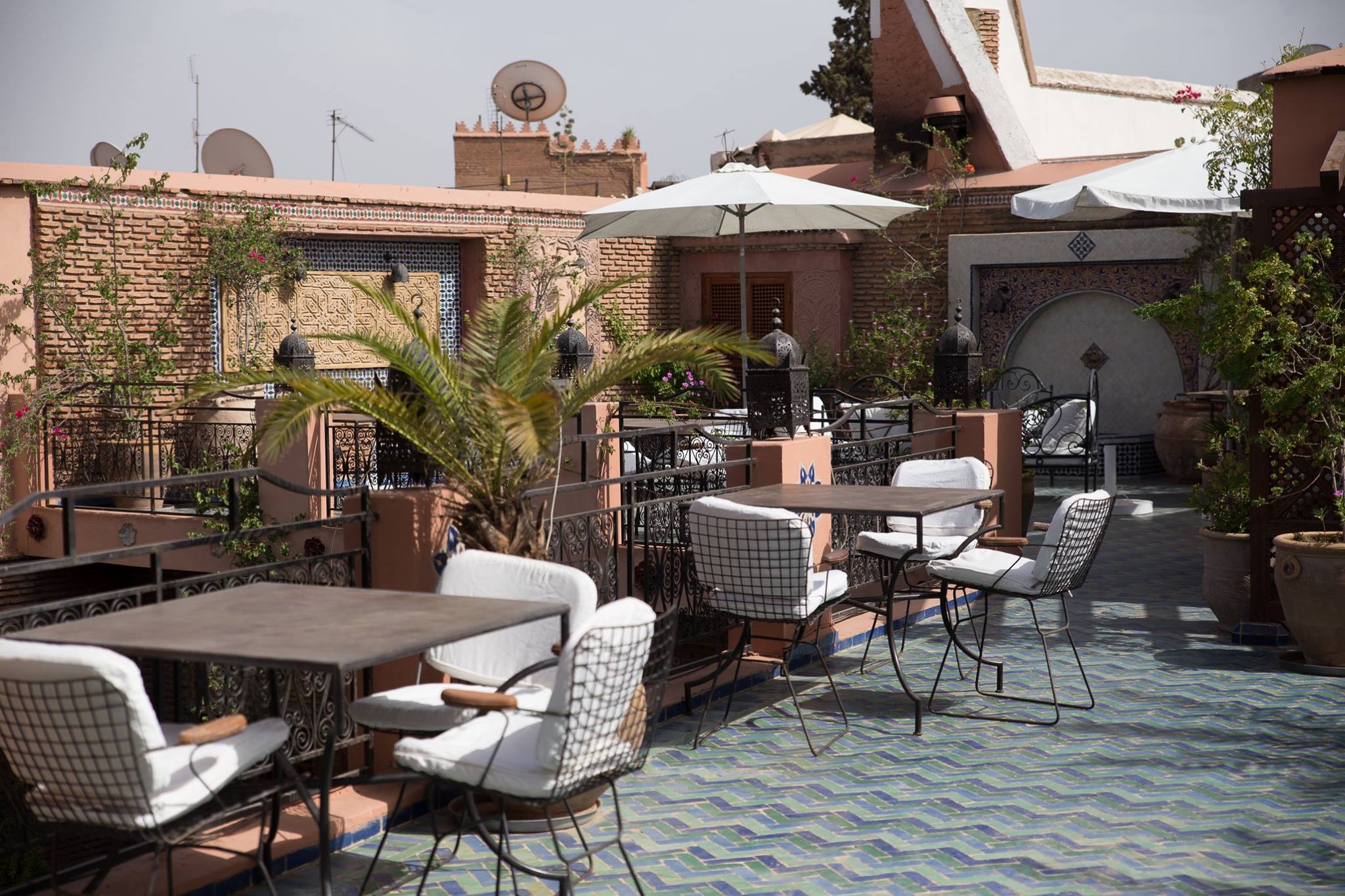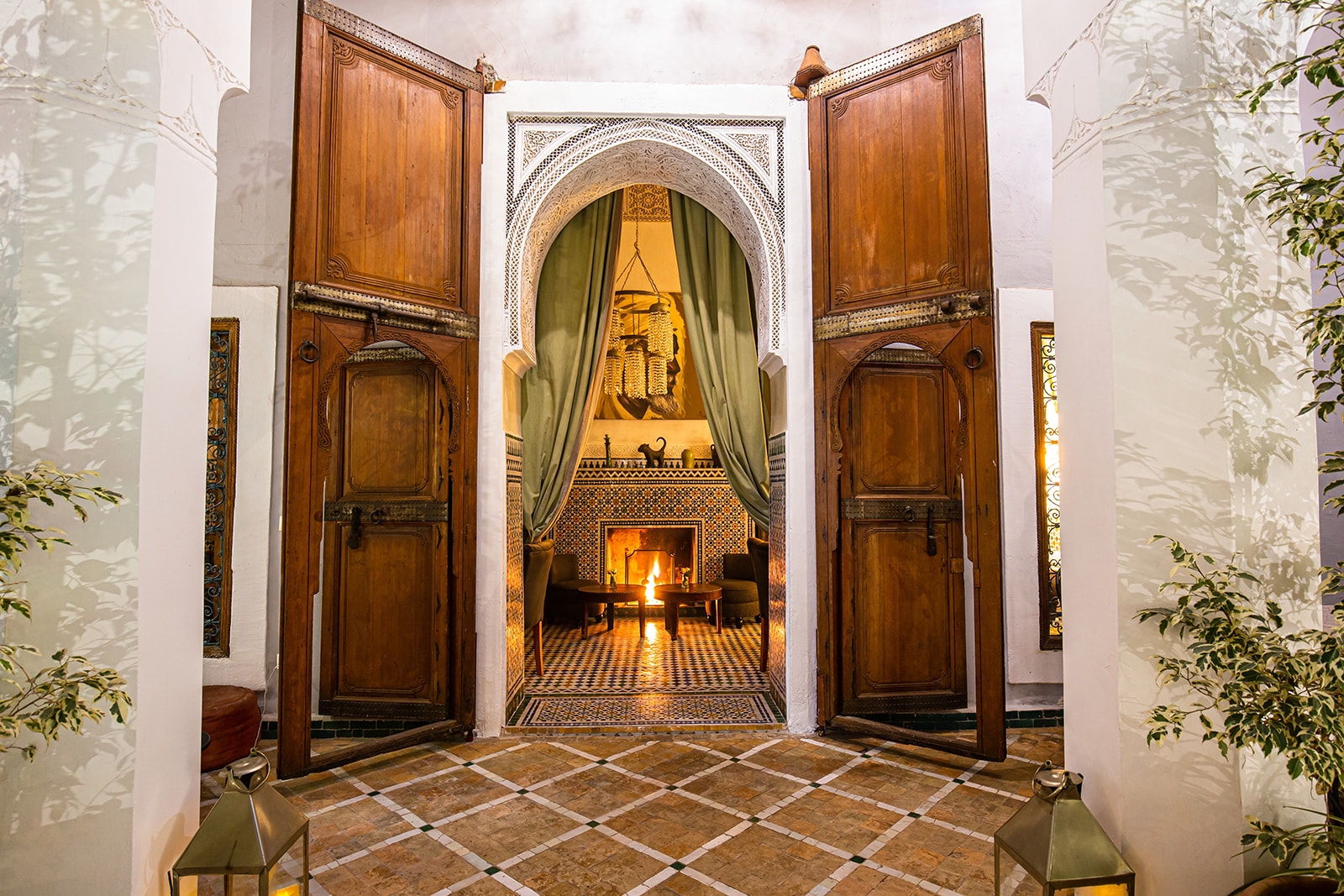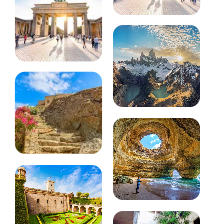Exceptional Riads in Marrakech
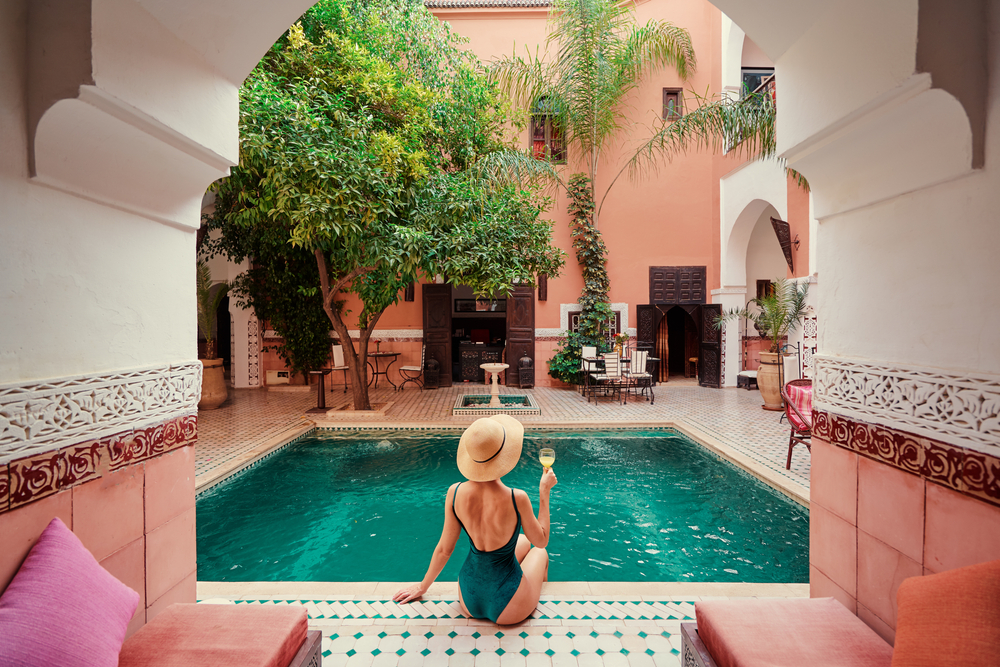
In contrast to the silent Sahara, the Pearl of the South is an oasis of life that makes a lot of noise. Behind its historic ramparts, it’s teeming with fascinated visitors, bargain-hungry vendors and noisy, overloaded animals. A total souk! But that’s not enough to make Morocco any less attractive as a destination. Quite the contrary!
Amidst all the hustle and bustle, Marrakech hides a few secret spots where everything is calm and pleasure. A multitude of comfortable Riads ready to offer you an enchanting night’s sleep. So follow the guide!
Riads: Moroccan-style living and more
1. First of all, what is a Riad?
Rich in a succession of civilisations and dynasties, Morocco’s history has given rise to an incredible heritage. This is particularly true of its built heritage. There are mosques, ramparts, palaces, tombs and, of course, Riads.
In Moroccan culture, Riads are traditional dwellings that were once inhabited by the families of the country’s rich merchants and traders. Their first appearance, which is not very clear, dates back to the Saadian period, under the reign of Sultan Ahmed El Mansour. For those of you who don’t know much about it, you’re straddling the 16th and 17th centuries on a timeline.
Originally, Riads were mainly concentrated in the Medinas. In other words, the old part of imperial Arab cities such as Rabat, Salé, Fès, Essaouira and Marrakech in Morocco. With urban growth, these bourgeois houses have ended up growing outside their preferred area. In the process, their number and architectural diversity have increased.
2. One word, 3 meanings
In Arabic, the word “Riad” (ر و ض) has 3 meanings: health, nature and mathematics. On the face of it, nothing we can associate with the charming buildings we have in mind. Or so we think!
Health
This refers to the idea of “exercise”, “walking” or simply “walking”. The Riad’s main characteristic is to give its guests that strange sensation of being outside while being inside, thanks to the lush central patio. It’s a way of taking a walk without having to leave home.
Nature
Another root of the word that echoes a visual element close to a meadow or a garden planted with trees. And not just any garden. The one described in the Koran, with its many trees, fruit bushes within easy reach and fountains. Hence the great importance attached to natural light and vegetation in the courtyards of Riads.
Mathematics
Last but not least! The construction of a building inevitably involves the use of mathematics. Without them, how could we manipulate spaces, define the height of walls and use the symmetry so dear to the traditional architecture of the Riads?
3. Unique architectural gems
On form
A landmark in Moroccan history, Riads never cease to amaze visitors with their ravishing appearance. To achieve this unique result, not one, but several architectural influences have been harmoniously combined. The arches and cupolas are an expression of Arab-Andalusian art. As for the gardens, their conceptualisation suggests a heritage that is both Persian and Mughal (India). As for the inner courtyard, the resemblance with Roman atriums is more than tangible.
Promoting the cult of intimacy, Riads have a deliberately codified structure. In general, they face entirely inwards to keep out the heat and noise. And in the same vein, the outside facades are thick blind walls that give no hint of the extraordinary beauty hidden just behind. What’s more, very few riads have proper windows overlooking the narrow streets of the Medina.
Once you’ve passed through the doors and the chicane entrance, you immediately feel the small palace-like paradise of the Riads. On the ground floor, the communal areas, dining rooms and kitchens revolve around the central open patio (the Bhou), which is either square or rectangular in shape. This is a much-loved space, often featuring one or more pools of water and a profusion of planting (palms, aromatic plants, bougainvilleas, orange and lemon trees, etc.). All in a very geometric way.
Upstairs, where there are 1, 2 or even 3 galleries of very attractive balconies, are traditionally the private areas. In two words: the bedrooms. They usually consist of a small sitting room and a recess housing the bed and the rest of the furniture. Last but not least, the Riad’s rooftop terrace with its panoramic view brings the visit to a close!
In the background
The distinctive architecture of the Riads wouldn’t be nearly as remarkable without this sense of meticulous detail and decorative opulence. From the outside, the surprise is total!
Dressing a Riad is quite rightly an art. The skills of local craftsmen are brought to the fore in an array of materials and colours, turning these Moroccan homes into precious jewel cases.
The main decorative and construction elements used in the first Riads include :
- Tadelakt : Silky-textured plaster covering walls, ceilings and flowerbeds in red, ochre or burnt orange.
- Zellige: A traditional mosaic whose shapes and colours cover fountains, walls, pillars, corridors and staircases to create a refined, sunny effect.
- Arabic calligraphy: Quotations from the Koran in Arabic calligraphy are often nestled in the tadelakt or zellige. A way of underlining the intellectual and divine importance of writing in local culture.
- Stucco: A cousin of tadelakt, this malleable lime coating is a functional and artistic technique that was developed in Roman times. It is obtained by mixing cement, sand, water and limestone.
Whether traditional or modern, no two riads are the same. However, as true flagships of the country, they continue to pass on the spirit of their ancestors and Moroccan culture to new generations and visitors alike.
Once private palaces, now the property of the world
1. The charm of yesteryear
A shy and complicated start
Surprising as it may seem, the huge interest in Riads was not immediate. Initially, it was quite the opposite!
Hit hard by the rapid expansion of other major Moroccan cities, Marrakech reluctantly shed part of its population. And as every cause has its consequence, the Riads are simultaneously being abandoned by their wealthy owners. It was not until the dawn of the 60s and 70s that their destiny took another turn. That of an unsuspected craze.
Time for revenge
Foreign travellers (first Americans, then Europeans), diplomats, the wealthy and celebrities (Yves Saint-Laurent, Jean-Paul Gaultier, Bernard-Henri Lévy, Juan Goytisolo…) were to be the main players in the revival of these Riads, which had fallen into ruin. Their desire to stay there for a few months a year or to live there every day led to a wave of renovations that restored these architectural jewels to their former glory.
In the 1990s, the riad phenomenon gained momentum and the number of people living in the Medina of Marrakech increased. Other buyer profiles were added to the existing ones. Firstly, there were retirees (mainly Spanish and French) who coveted small Riads to welcome their families and spend their golden years.
Photo Facebook Page 72 Riad Living hotel Marrakech
And then there are the many investors. Yes, as you’ve no doubt already seen, Riads are a godsend in the hotel and restaurant business. By converting them into guest houses, hotels and restaurants, the entire tourist demand is catered for. Sometimes at the risk of making Marrakech the next target for mass tourism.
While the popularity of the Riads may raise new challenges for local communities in the future, it has also helped to bring to light a number of craft trades that are in danger of disappearing. But above all, it has contributed to certain Medinas being proclaimed protected heritage by UNESCO.
2. A Riad all to myself!
Living in Morocco, and particularly in Marrakech, is an option that more and more foreigners are considering. They come to take advantage of the omnipresent sun, milder-than-usual temperatures, an attractive standard of living, a welcoming population and, why not, a Riad to lay their hands on. It’s an effective way of immersing yourself in the habits and customs of the destination, but it comes at a price.
Generally speaking, financing a Riad is relatively expensive. As well as the purchase price, you also have to plan for the restoration work that needs to be done. This can sometimes cost as much as the purchase price. As they are unable to cover all these costs, as well as those relating to the upkeep of the building, the majority of owners of these ancient structures are foreigners.
For a Riad, excluding renovation work, you need to budget at least €150,000 to €200,000. And double or even triple that for a brand new one. Location and surface area are key factors in determining the purchase price.
Once purchased, the average property costs between €300,000 and €400,000 to run.
Sleep in a setting worthy of a thousand and one nights in Marrakech
Think you’ve done the hard part by booking your plane tickets to Marrakech? Then you haven’t yet found out which Riad you’ll be sleeping in peacefully. There are an estimated 700 of these traditional Moroccan houses throughout the city. Fortunately, their very different styles will help you make your choice.
Here’s the proof with the 10 addresses below:
1. Riad Tchaïkana
Photo Facebook Page Riad Tchaikana
- Address: 25 Derb Lferrane, Marrakech
- Contact: +212 5243-85150/ in**@*******na.com
- Service : ***
2. Riad Dar One
Photo Page Facebook RIAD DAR ONE Marrakech
- Address: 19 Derb Jamaa El Kabir, Marrakech
- Contact: +212 625-489943/ bo*****@**********ne.com
- Service : ***
3. Riad Clémentine
Riad Clémentine Facebook page
- Address: 38 Derb Sidi Messaoud, Marrakech
- Contact: +212 5243-82294/ in**@************ne.com
- Service : ***
4. Riad de Tarabel
Facebook page Riad Tarabel
- Address: Dar El Bacha, 8 Derb Sraghna, Marrakech
- Contact: +212 5243-91706/ co*****@**************ch.com
- Services : ****
5. Riad Yasmine
Le Riad Yasmine Facebook page
- Address: 209 Rue Ank Jemel, Marrakesh
- Contact: +212 5243-77012/ le***********@***il.com
- Services : ****
6. 72 Riad Living
Facebook page 72 Riad Living hotel Marrakech
- Address: Dar El Bacha, 72 Arset Awzel, Marrakech
- Contact: +212 5243-87629/ **@********ng.com
- Services : ****
7. Riad El Fenn
El Fenn Facebook page
- Address: 2 Derb Moulay Abdullah Ben Hussain, Marrakech
- Contact: +212 5244-41220/ co*****@*****nn.com
- Service : ****
8. Riad Palais Sebban
Facebook page Riad in Marrakech-Palais Sebban
- Address: 43 Derb Moulay Abdellah Ben Hssein, Marrakech
- Contact: +212 5244-40226/ co*****@**********an.com
- Service : *****
9. Riad Dar Kawa
Dar Kawa Facebook page
- Address: 18 Derb El Ouali, Kaat Benahid, Marrakech
- Contact: +212 661-344333/ in**@*****wa.net
- Service : *****
10. Riad Le Rihani
Facebook page Riad Le Rihani-Marrakech
- Address: 52 Derb El Arsa, Marrakech
- Contact: +212 661-328668/ in**@*********ni.com
- Service : *****
200 audioguided tours for cities all around the world
Download